Top stations don’t please everyone. They focus on a narrow segment of their (target) audience to achieve great ratings and consistent results in the long run.
Narrow focus leads to broad results in radio programming, that’s a known fact. But did you know that you can have a much more solid audience base if you tailor your research towards a female audience? An interview with research expert Stephen Ryan, who says that in the end, radio is still an art. “If you could program a station by numbers, the accountants could do it.”
“We had a license for 60 watts,
and were pumping out 80 kilowatts”

Stephen Ryan (left, middle picture) was presenting the mid-morning show on Contact 94 (images: Jersey Wavelength)
Start deejaying in clubs
Stephen Ryan grew up in Dublin, where he listened to the legendary Radio Luxembourg. It had a powerful AM signal that travelled over 700 miles to reach the Irish capital. It was a big station, with great-sounding production and star presenters: “These guys seemed to have a fantastic lifestyle, and they were excellent communicators.” His own country didn’t have commercial radio until the mid 80s, which was good in a way: “There was an Irish solution to an Irish problem. That’s how pirate radio stations turned up.” Compared to other countries, Ireland had a liberal policy: “Unless you interfered with emergency services, you were left to it.” After finishing school, he applied for a job as lighting engineer in a nightclub. “The position had gone, so they said: what else can you do? Have you ever been a DJ? I said: oh yeah, of course I have, haha!”
 Gain (a)broad radio experience
Gain (a)broad radio experience
He started as warm-up act for the famous Larry Gogan, and then met a club DJ who worked at Radio 257 and introduced him there. Later he became co-owner of Dublin’s Capitol Radio, and a presenter on Contact 94. It was aimed at the UK, but broadcasting from northern France, and one day got raided by its less-tolerant government. “There was a bit of a ‘misunderstanding’. We had a license for 60 watts, and were pumping out 80 kilowatts…”
Spend research budgets wisely
Returning to the UK, Ryan moved on to program stations, such as Pirate FM in the Southwest of England, and then went to the corporate & consultancy side for dmg Radio (now NOVA Entertainment), when it was active in Europe, and SBS Broadcasting. Most clients of Ryan Research are from outside the UK. “There’s a lot of consolidation; a few groups with many stations and their own research departments.” He consults brands such as MAD Radio in Greece, iRadio in Ireland, and Radio ZU in Romania, the leading station in Bucharest. As one of his first commissions, he’s helped to launch Kiss FM; Romania’s nationwide number 1 with a bigger network than ZU. “I’m basically competing against myself now, haha.” The 2007 crisis has squeezed radio budgets worldwide – which he doesn’t consider to be all bad, as it’s made them focus on quality research. “Over-research can be overkill if there’s too much information to absorb.”
“You’re dealing with reality”
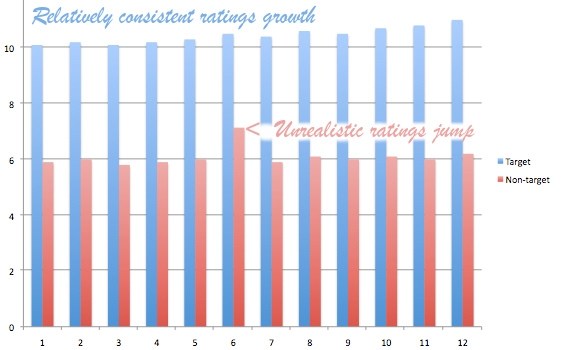
Program directors should investigate unexpected ratings deviations (outside the target demo) (image: Thomas Giger)
Respond to long-term developments
Talking about information overload… the Portable People Meter seems like a blessing and a curse at the same time. What should be your focus as a program director, in a market with huge amounts of data at your disposal?
“The currency is the ratings; that’s where the money comes from – so that’s where the focus has to be in commercial radio. Whether it’s real or phantom statistics, like a ratings glitch due to a sample deviation, it’s still what advertisers read. PPM is highly accountable, but it doesn’t give much margin for error. Jocks in the States may dip in a particular segment, and they’re out of a job tomorrow! When you look at a diary system or yesterday recall, it’s a snapshot, valid for a certain period of time.” In his view it’s better to make valid decisions based on trends, instead of a one ratings book or a few PPM reports. “Look at who you’re targeting and where you’re consistent. If you see a trend growing on that consistency, that’s the thing you should focus on. If there are obscure results on the outsides of your target demo, you have to be careful. I like to be a pragmatist and realist when looking at data.”
 See what lies beneath
See what lies beneath
Stephen Ryan advises to not only check sample sizes to ensure data integrity, but also look under the surface and find out what causes ratings results, as it may be an outside; not an inside influence. “In case of a negative trend, try to see if there’s really one, and why. If there’s a positive development, then make sure that you have driven it and that it’s not something you’ve inherited from another station’s behavior.”
Attract the right audience
One of his CHR clients from the last few years once had some peculiar morning show numbers. It seemed like the show was climbing in an older demographic; outside the station’s young target demo. “A morning show will bring in a secondary cume of people who only listen to that show. That’s great, but it’s difficult to convert those people into daytime listeners. It’s better to achieve higher ratings within your target demo.” In this case, the Average Quarter Hour Share, sample size and male-female ratio looked unrealistic. “The ‘growth’ was driven by something that potentially wasn’t really there.” As expected, the correction already showed during the next ratings book. “You’re dealing with reality, rather than this kind of strangeness that you need to be cautious of.”
“It’s like chalk and cheese”
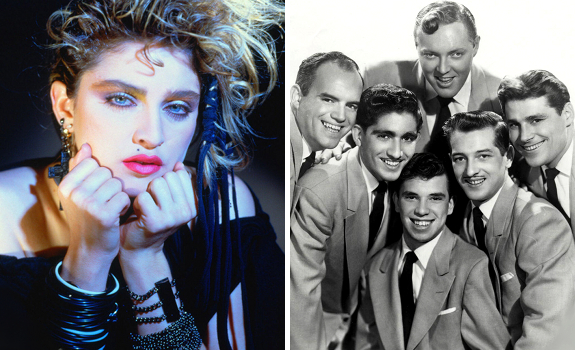
Music formats should not be too broad in eras covered (images: Warner Bros., Decca Records / James Kriegmann)
Recruit more qualified participants
Have you ever found test results that were the opposite of what common sense or radio laws tell us?
“In Bulgaria, they have a format called Bulgarian Pop-Folk. One station, specializing in this music genre, did really well in the ratings. But we couldn’t get anybody to talk about it in focus groups or market studies, and it looked like the station didn’t have a great audience. It’s like asking people which newspaper they read. They’ll answer ‘The Times’ or ‘The Guardian’, but they actually read The Sun!” Ryan had to dig deep to find enough people who will answer honestly when being interviewed for a market study.
 Know your market’s history
Know your market’s history
Another case happened in Hungary, which back in the late 1990s was not a developed radio market. The number 1 in Budapest at the time was Juventus Rádió, a hertitage brand, which then played an unconventional music mix: “It went from Madonna to Bill Haley & His Comets, but the station was extremely popular. It’s been a good learning experience for me. If you looked at it in pure formatic terms, it was a mess and just didn’t make any sense.”
Define a station USP
It worked because Juventus had a certain signature sound; be happy, upbeat and fun. “Listeners were tuning in for the melodies, and didn’t care what era the stuff was coming from.” In most of today’s markets, that wouldn’t work anymore: “It’s like chalk and cheese. When ‘chalk’ people hear ‘cheese’, they’re gone, and vice versa; you’ll end up with no audience.” The Hungarian radio market changed once the formerly communist country opened to foreign investors dmg Radio and Emmis Communications, who got licenses for Danubius Rádió and Sláger Rádió (and lost them in 2009, after a heavily-discussed ‘political’ decision). Introducing music research, Danubius and Sláger challenged established brands to respond with a more focused format, which made the market mature. Stephen Ryan explains that not only radio programming has evolved: “People’s expectations are different as well. There’s much more choice now; they don’t have to put up with something they don’t really like.”
“Once it’s burned; it’s burned”
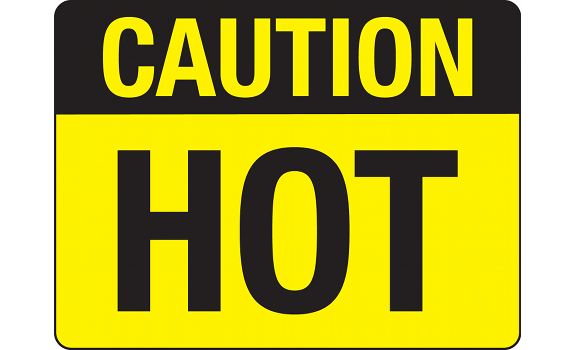
Once a song is burned due to heavy airplay, it’s ‘damaged goods’ for a long time or forever (image: Signs of Safety)
Track people’s musical preference
While every market is different, have you also found best practices that will work anywhere?
“Each country has an individual culture and music history, and there are techniques that you can use and develop to understand them. But you also have to keep monitoring music tastes, because time can make huge differences.” He recalls working with Lampsi FM in Athens in the early 2000s, which then played 80% Greek and only 20% international music. “Most Greeks were biased towards domestic music, and those who loved foreign songs were less enthusiastic about Greek music. It’s interesting to see that, over time, the station could start to play these music styles 50/50. “Because of the exposure to international TV and so on, people became more aware of and open to foreign artists. Formats tend to work in every country; the main difference is in the ingredients.”
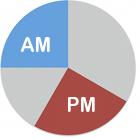 Know people’s listening habits
Know people’s listening habits
What Ryan does when he enters a new market, is find out the average Time Spent Listening and research when and how people are consuming radio. It can be different from market to market: “Normally, the morning show would have the highest potential ratings. Not in countries like Greece! They tend to get up a little later than the rest of us, haha. You’ll either have the mid-morning or drivetime show get the best ratings.”
Conduct regular music research
In terms of total music exposure, it also matters what your competition is playing.
“There can be a lot of overlap. Similar artists are being played on a wide range of stations, so you’re going to be influenced by ‘market burn’. Even your most loyal listeners will be listening to other stations. If they’re getting exposed to songs too much elsewhere, that’s going to affect you as well – no matter how careful you are with your format. If you do an Auditorium Music Test to research highly-familiar music, burn is a big issue, particularly in countries with many CHR stations. They not even have to play these songs 140 times a week; 50-60 times is enough. A song is that exposed because it’s highly popular at the moment, but once it’s burned; it’s burned. It takes quite a lot of time to come back.”
“You can’t please everyone,
you’ve got to focus”

Targeting female listeners can give a station a loyal audience base, thus more consistent ratings (photo: stock image)
Res(e)t your highest-rotating songs
Are there exceptions? Gotye with Somebody That I Used to Know feels like a timeless song.
“That song had a long life-span. It is melodic, not ‘in your face’, and has a good rhythm. Males don’t find it alienating, and females like the softness of it. But there comes a point where you do need to rest a song, even if you keep seeing high scores. You might have to take a brave decision to drop songs for a while to ease them back in later, like you would do with platooning. Songs have a natural life span, and obviously do peak – the key element is how quickly they drop, in terms of rating.” Stephen Ryan’s advice is to reduce exposure or completely rest a song for a period of time, and then re-test it. “The difficulty is: if you burn it too much, you can’t bring it back. There is a cliff, and somewhere along the lines any song will fall off the cliff. People are gonna’ go: I used to love it, but I can’t stand it anymore! You might do your AMT 6 months later, and it burns; 1 year later, and it still burns. It’s a delicate balance.”
 Look beyond burn percentages
Look beyond burn percentages
It used to be that songs were slowed down (or taken out) when they reached a 20% burn level, in other words: when 1 out of 5 listeners is tired of hearing it. Now, it’s different: “If you do that these days, you wouldn’t have any song to play at all!” He prefers to balance burn rates with favorite scores: “There are situations where you have a 25% ‘burn’, but also a 25% ‘favorite’. It’s not ‘one size fits all’. You’ve got to look at it song by song.”
Weigh results for consistency
If you would program an Adult Contemporary station with a 50/50 male-female audience and see that most women love a certain song, while most men hate it. Would you still play it?
“Even if you have a 50/50 audience balance, it’s almost impossible to take a 50/50 research approach, so I have a bias towards females. I still want to know what male listeners are thinking, but especially young males jump on songs quickly and boost it up quite considerably. Then they get tired of it, and move on. Females tend to be more consistent in their viewpoints, and to live with a song for a longer period of time. You also can’t please everyone; you’ve got to focus. Otherwise you’ll end up with 3 songs that all males and females like; playing those constantly!” Ryan adds that the bias principle applies to age as well: “A lot of stations I work with, have an important audience in 15-19 year-old teenagers, but to keep consistency we focus on the older demographic of 20-29s, without alienating those younger groups. If we would focus on the younger end, the format would be all over the place.”
“Radio needs personality
at any time of the day”
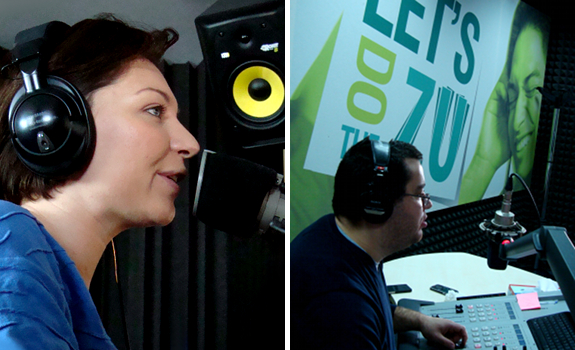
Engaging personalities, also during daytime, make radio much more alive than Spotify & Co. (photos: Thomas Giger)
Appeal to female listeners
Is this the reason why many CHR stations have a 24-year old female as their target listener?
“You’ve got to keep in mind the sales aspect as well, but it tends to be that if you reach females and give them a consistent product, they will give you consistency and build your audience. They’re more likely to be loyal to you. Males will be more likely to skip around.” Similar, a CHR station’s morning show (in most markets) has a better chance to do well when it’s popular among 20-29 year-old females. “They’ll give you a much better ratings consistency and audience base. We live in a changing world, but certain behavior patterns seem to continue, regardless of advanced technology. That’s why formats work.”
“If you reach females and give them a consistent product,
they will build your audience”
 Optimize every format element
Optimize every format element
Stephen Ryan sees radio’s TSL among young people decline in almost any market – the only difference is how much, depending on the local competition from other media. “It makes it even more important to be sure that you have the right thing on, every minute of the day. You need to squeeze that loyalty as best as you can.” To him, it’s not about getting people to listen longer, but about creating positive listener expectations that make them return.
Have great personalities & songs
European stations used to bring in American consultants, as it was a developed market that they had no real access to – other than going there themselves or ordering aircheck tapes. So the Internet has had an effect on radio consultancy. “If you want to get ideas for promos and that kind of stuff, you can now do that yourself.” He says that it’s also about execution (as “a great idea that’s badly executed is a bad idea”), but sees most of his clients focus on mornings and music: “The morning show usually gets the most attention; that’s where personality images come from. I strongly believe that radio needs personality at any time of the day – maybe not in the same quantities as a morning show. It provides an extra hook that a streaming service can’t. But in general, outside of the morning show, the daytime is judged by your music. If you don’t have the right music, you’re in trouble.”
“If you could program a station by numbers,
the accountants could do it”
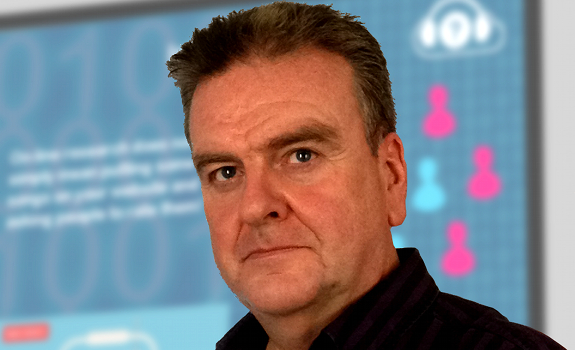
Stephen Ryan sees audience research as helpful instruments for creative programming (photo: Ryan Research)
Introduce new music gradually
Where do you draw the line between research science and programming art?
“There is definitely an art in programming radio stations. You can only test something that’s familiar, and it can only become familiar if it’s played on the radio. So somebody has to say: I believe this is a right song for my station, and take a bet on it. Just because a song ‘dies’ on its first outing in a test, doesn’t mean that it disappears. It just might not grow up the power ladder; not move to the A list quickly. Research could be bi-weekly, so you have to give songs enough time to grow. Don’t become handcuffed to research. It helps you to use the right ingredients in the right dose. At the end of the day, if you could program a station by numbers, the accountants could do it.”
[See also part 2: Research Relies On Reliable Data]





Hi Gatbel,
We mainly know of good radio books to read, however, some of these works also cover other broadcasting disciplines – such as Programming For TV, Radio & The Internet and Television And Radio Announcing.
You’ll find them on the book page.
Happy reading :-)
Thomas
I am interested in books concerning radio, and TV in particular.